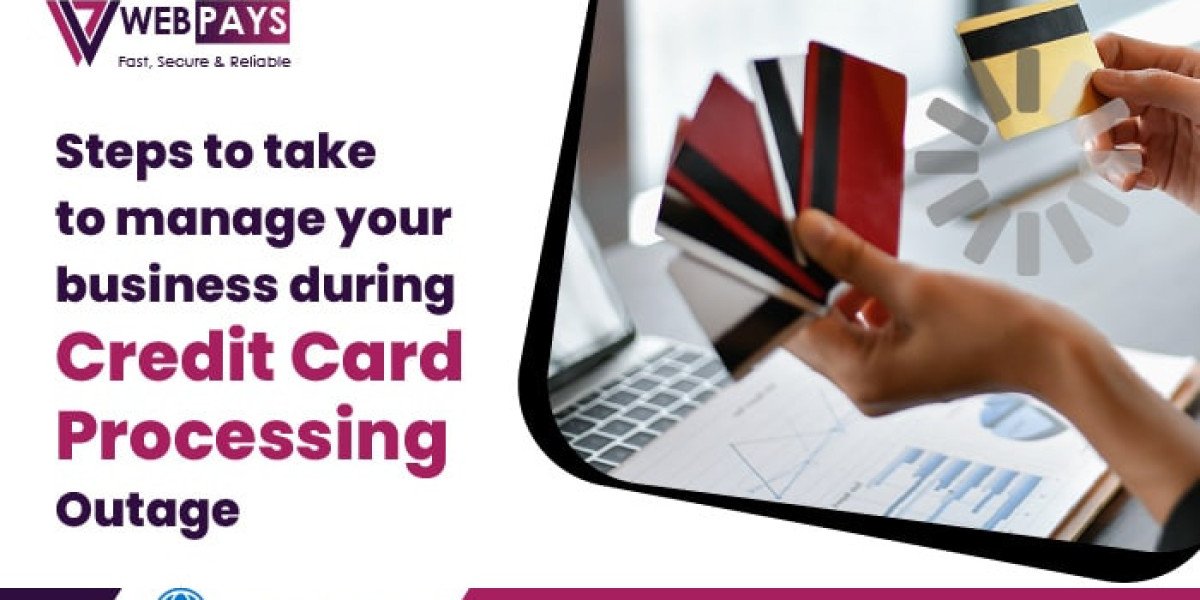As the holiday season approaches, businesses are gearing up for increased sales, implementing strategies to maximize revenue. However, one of the most significant challenges that can cripple both online and brick-and-mortar sales is a credit card processing outage. When your payment systems display error messages like "system offline," your business faces potential loss of revenue for every minute the issue persists. In this blog post, we'll explore the common causes of credit card processing outages and provide a comprehensive guide on steps to take in managing your business during such disruptions.
Understanding the Causes of Credit Card Processing Outages
Credit card processing outages can disrupt business operations and compromise customer transactions. Understanding the diverse causes of these outages is crucial for businesses seeking to maintain a reliable payment system. Here are some common reasons behind credit card processing outages:
1. Technical Glitches:
Technical glitches encompass a range of issues, from software bugs to hardware malfunctions. Regular system checks and updates are essential to prevent these glitches from affecting credit card processing.
2. Network Failures:
The intricate web of communication between merchants, credit card processors, and banks is susceptible to disruptions. Network redundancies and reliable communication channels are vital to minimizing the impact of network failures.
3. System Overload:
High transaction volumes, especially during peak periods, can strain processing systems. Scalable infrastructure and load-balancing mechanisms of a top credit card processor help manage increased demand effectively.
4. Security Measures:
Stringent security protocols, including fraud detection measures and routine system updates, may briefly interrupt credit card processing. These measures, while essential, should be implemented seamlessly to avoid service interruptions.
5. Merchant Errors:
Errors on the merchant's end, such as incorrect configurations or outdated software, can contribute to processing issues. Regular training and adherence to best practices help mitigate these risks.
6. Banking System Issues:
Challenges within the banking infrastructure, like server failures or maintenance activities, can disrupt the flow of credit card transactions. Collaborative communication between banks and merchants is crucial for minimizing downtime.
7. Regulatory Changes:
Evolving regulations may necessitate updates to processing systems. Proactive compliance measures and a well-defined implementation strategy help businesses adapt to regulatory changes with minimal disruption.
8. Cybersecurity Threats:
Cybersecurity threats, including DDoS attacks and data breaches, pose significant risks to credit card payment processing systems. Robust cybersecurity measures, such as firewalls and intrusion detection systems, are essential for safeguarding against these threats.
9. Third-Party Service Failures:
Dependency on third-party services introduces additional points of potential failure. Businesses should carefully select and monitor third-party providers, ensuring they maintain high levels of reliability and security.
10. Natural Disasters:
Unforeseen events like natural disasters can disrupt physical infrastructure supporting credit card processing. Disaster recovery plans and geographically dispersed data centers help ensure business continuity in such situations.
Steps to Manage Your Business During a Credit Card Processing Outage
Managing your business during a credit card processing outage requires a strategic approach to minimize disruptions and maintain customer satisfaction. Here are essential steps to navigate through such situations:
1. Communicate Proactively:
Immediately inform both your staff and customers about the credit card processing company outage. Transparent communication helps manage expectations and reduces frustration.
2. Implement Alternative Payment Methods:
Offer alternative payment options such as e-checks, ACH & bank transfers, mobile payment apps, or cryptocurrencies to ensure customers can still make purchases despite the credit card processing outage.
3. Utilize Manual Authorization:
If applicable, use manual authorization processes to approve credit card transactions. Ensure that your staff is trained on how to handle manual transactions securely.
4. Secure Transactions:
Implement additional security measures for alternative payment methods to mitigate the risk of fraud during the outage. Train your staff to be vigilant and follow security protocols.
5. Record Transactions:
Keep detailed records of all transactions processed during the outage. This documentation is crucial for reconciling accounts and addressing any discrepancies once the credit card processing system is restored.
6. Update Customers Regularly:
Provide ongoing updates to customers regarding the status of the credit card processing outage and the steps you are taking to resolve the issue. Transparency helps maintain customer trust.
7. Activate Backup Systems:
If available, add on a top credit card processor for backup to restore transaction capabilities quickly. Regularly test these backup systems to ensure their effectiveness.
8. Contact Your Payment Processor:
Reach out to your payment processor promptly to report the issue and seek assistance. They can provide insights into the cause of the outage and an estimated timeline for resolution.
9. Monitor Social Media and Reviews:
Keep an eye on social media channels and review platforms to address customer concerns promptly. Responding proactively to feedback shows your commitment to customer satisfaction.
10. Train Staff for Contingencies:
Ensure that your staff is well-trained on contingency plans for credit card processing outages. This includes understanding alternative payment methods and providing exceptional customer service during challenging times.
11. Evaluate and Learn:
After the outage is resolved, conduct a thorough evaluation of the incident. Identify the root cause, assess the effectiveness of your response, and implement any necessary improvements to prevent future occurrences.
12. Implement Redundancies:
Consider implementing redundancy measures in your credit card processing system to minimize the impact of future outages. This may include backup servers, alternative processors, or failover mechanisms.
By following these steps, businesses can navigate credit card processing outages more effectively, minimize the impact on operations, and maintain a positive customer experience even in challenging circumstances.
Choose WebPays for Reliable Business Credit Card Processing
WebPays, a leading Europe-based merchant service provider, offers cutting-edge payment solutions to support business growth. Our PCI-DSS compliant systems ensure secure transactions, and with features like free credit card terminals, fast payment funding, 24/7 customer service, and transparent fees, we are committed to meeting your business needs. Partner with WebPays to enhance your business capabilities, and contact us for a free merchant service consultation to discover how we can elevate your operations.









